This is about Design Review of Nk Mip Desert Cultural Center, Osoyoos, BC, Canada. The Nk’Mip Desert Cultural Center is designed to be a specific and sustainable response to the building’s unique context, the unusual Canadian desert found in the South Okanagan Valley in Osoyoos, British Columbia.
Sited next to a remnant of the Great Basin Desert (about 1,600 acres are being preserved by the band as a conservation area), this interpretative center is part of a larger 200-acre master plan.
Architecture of Nk Mip Desert Cultural Center
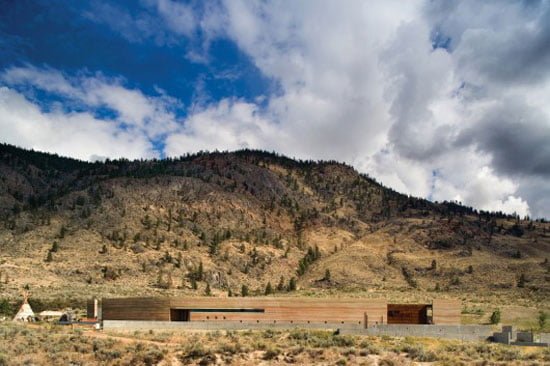
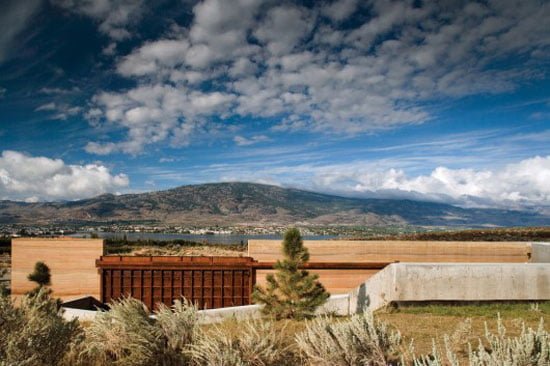
Fact File of Project Nk Mip Desert Cultural Center:
- Architects: DIALOG
- Location: Osoyoos, BC V0H, Canada
- Architect In Charge: Bruce Haden
- Project Architect: Brady Dunlop
- Area: 1,115 sqm
- Photographs: Nic Lehoux Photography
- Project Team: Norm Hotson, Stephanie Forsythe, Tina Hubert, Julie Bogdanowicz
- Structural Engineering: Equilibrium Consulting Inc.
- Landscape Architecture: Phillips Farevaag Smallenberg
- Mechanical Engineering: Cobalt Engineering
- Electrical Engineering: MCL Engineering
- Code: LMDG Code Consultants
- Exhibit Design: Aldrich Pears Associates
- Acoustic: BKL Consulting
- Theatre Design: Douglas Welch
- Theatre Electrical: Acumen Consulting Engineers
- Live Displays: Bufo Incorporated, Harry Parsons
- Retail: Retail Excellence, Natalie Tan
- General Contractor: Greyback Construction
- Rammed Earth Wall Sub Contractor: Terra Firma Builders Ltd.
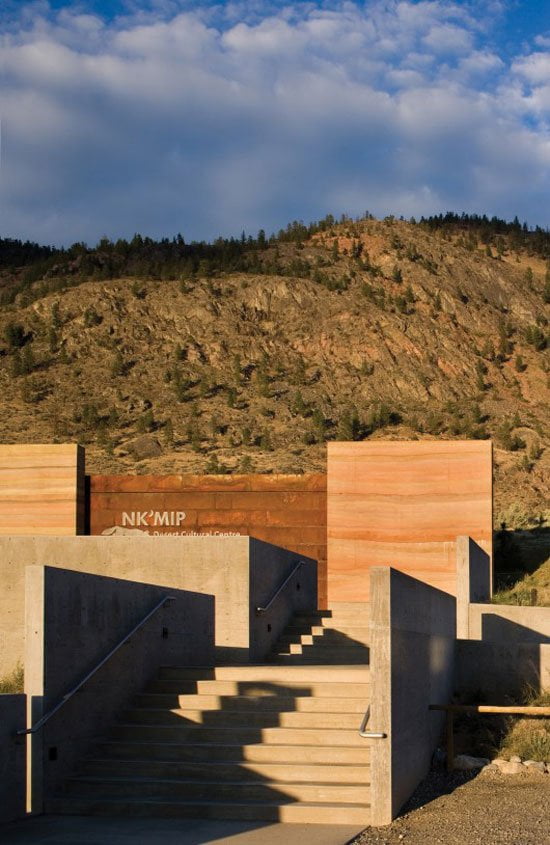
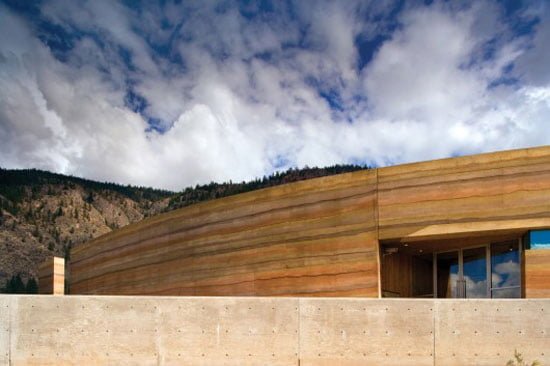
What Architect say about Nk Mip Desert Cultural Center :
Nk Mip Desert Cultural Center is the first of a number of new B.C. aboriginal centers, and part of a growing trend to explore the expressive potential of architecture to convey the rich past and the transforming future of aboriginal culture.
The practical reasons behind this architectural exploration grow out of provincial leadership—a premier whose efforts to improve aboriginal relations have resulted in changes to the treaty process—as well as a shift in the regulatory environment governing the types of buildings permitted on reserve land.
The building features indoor and outdoor exhibits that celebrate the culture and the history of the band, and is designed to be an extension of the remarkable site, and reflects the band’s role as stewards of the land.
nk’mip pronunciation:
The desert landscape flows over the building’s green roof, held back by a rammed earth wall. The partly submerged building is sited very specifically to focus the visitor’s eye away from the encroaching development of Osoyoos to the west, with the height of the wall set to create a layered view of the desert rising up in the middle ground, receding to the riparian landscape adjacent, and the mountains in the distance.
The attenuated entry sequence from the parking area moves visitors through a series of nested concrete walls up to an entry plaza at the end of the rammed earth wall.
The plaza—used for collecting large groups, and signage about events of the day—leads along a low concrete wall that separates the original desert landscape and the building.
nk’mip first nation:
This route is further defined by channel of water that draws people towards the entry, past the cor-ten steel gate of the service court and administration access. Entry into the interpretive center occurs at the midpoint of the gently arcing wall.
Inside, a theatre and “black box” exhibition space present information about the band and its historical relationship with the land.
The round volume of the “pit house” at the center of the exhibition space invokes the experience of conversation around a fire. From here, visitors move through a glazed wall into exterior exhibit space featuring information on native planting,
An outdoor performance area and amphitheater, a tulle mat teepee, a large figura sculpture, and a snake research area demonstration space.
This area also serves as a trail head for guided and unguided walks along 50 kilometers of paths through the desert. Small interpretive pavilions and a village of reconstructed pit houses and interpretive sculptures punctuate these trails.
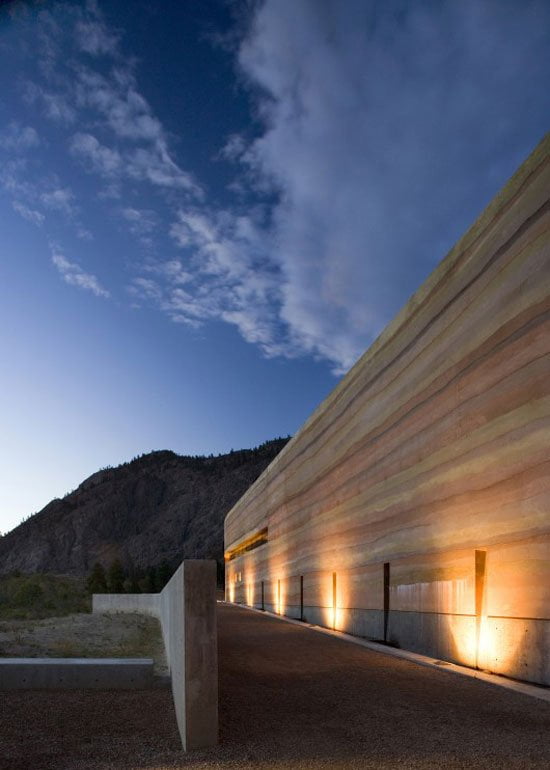
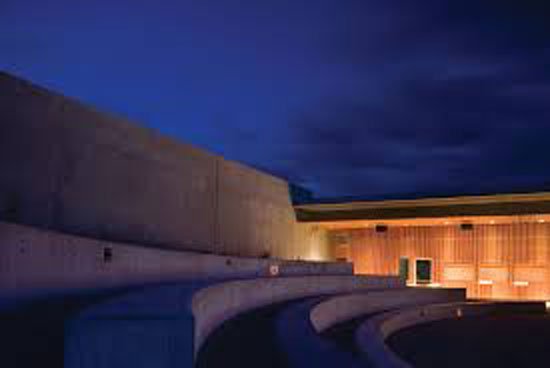
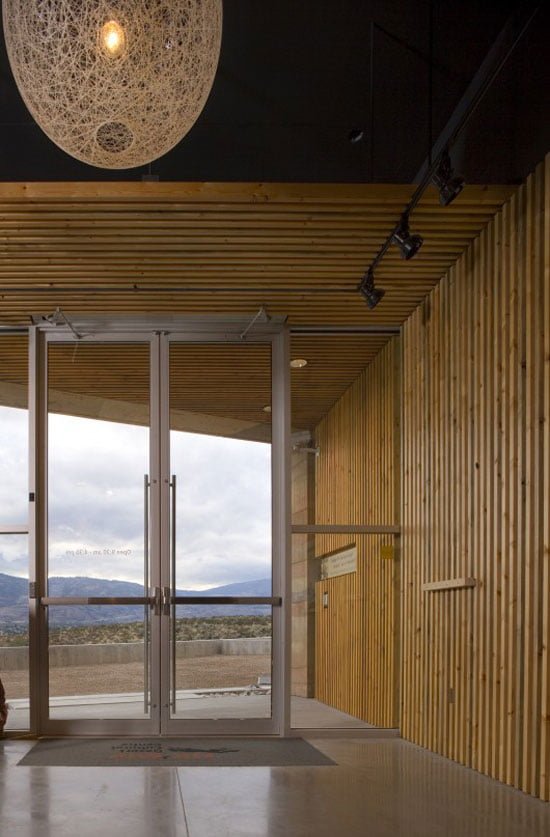
Architectural Exploration in Nk Mip Desert Cultural Center :
Sustainability Features :
The Nk Mip Desert Cultural Center is located in one of the most spectacular and endangered landscapes in Canada. Its rare desert condition is the northernmost tip of the Great American Desert, which extends southward as far as the Sonoran Desert in Mexico.
This parcel of land is the largest intact remnant of this unique habitat in Canada. It is part of the land of the Osoyoos Indian Band. This band also belongs to the larger Okanagan Nation which extends down into the US (the Okanagan represents a broader geographic area of bands sharing common language with separate constituent bands).
The project’s concern with deep sustainability grows out of the fragility of this landscape, and reflects the core values and history of the band. The extreme climate made sustainable design a very particular challenge.
Hot, dry summers and cool, dry winters see average temperatures ranging from –18 degrees to +33 degrees and often reaching +40 on summer days.
The building’s siting and orientation are the first strategic moves toward sustainability:
- The partially buried structure mitigates the extremes in temperature,
- Its orientation optimizes passive solar performance,
- Glazing minimized on the south and west sides.
- Ambitious approach towards sustainable design also includes the following features:
- The largest rammed earth wall in North America.
At 80m long, 5.5m high, and 600mm thick, this insulated wall (R33) stabilizes temperature variations. Constructed from local soils mixed with concrete and color additives, it retains warmth in the winter, its real thermal mass cooling the building in the summer, much like the effect the surrounding earth has on a basement.
A recent infestation of pine beetles in British Columbia has led to an excess of blue stain pine, which here is used in interior and exterior applications.
Although blue stain pine is a local material not normally specified for finished building use, Nk’Mip is something of a demonstration project, showing how it can be used both inside and outdoors to celebrate its unique visual qualities As its name suggests, the wood has a blue-tinted cast as though a blue wash has been applied, rather than the typical yellow color more typical of pine.
Although its inherent structural qualities are equal, the preferences of the powerful Japanese international market have historically influenced demand for yellow (white) pine.
A habitable green roof. This habitable landscaped roof reduces the building’s visual imprint on the landscape, and allows a greater percentage of the desert landscape habitat to be re-established on the site (replanting uses indigenous species). The roof also provides further temperature stabilization and insulation.
Mechanical features:
In-slab radiant cooling and heating in both ceiling and floor slabs create an even, comfortable environment that avoids blasts of air, noise and dust. Coupled with 100% outdoor air displacement ventilation, the system will result in savings of 30 to 50% over a forced air system.
Endangered species research :
The building program includes facilities for the band’s award-winning rattlesnake research project, as well as public viewing areas where visitors can see endangered rattlesnakes captured, tagged and micro chipped for further study and protection.
Careful water use management :
Water is precious in the desert, and a spare channel of water at the entrance along the rammed earth wall introduces this theme. Less visibly, demand on the site fed well is reduced by 40% by incorporating low-flow faucets, water less urinals, and dual flush toilets.
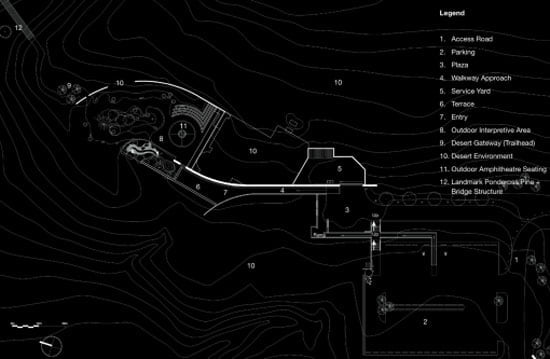
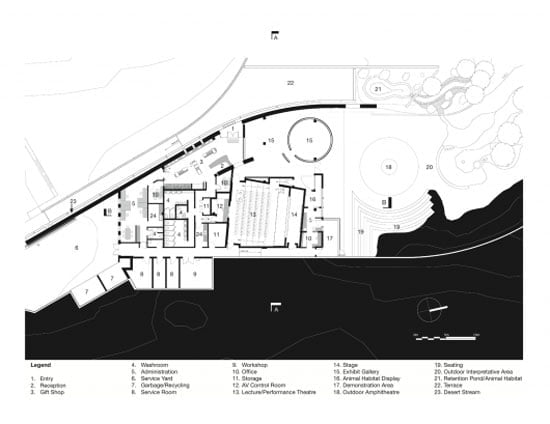

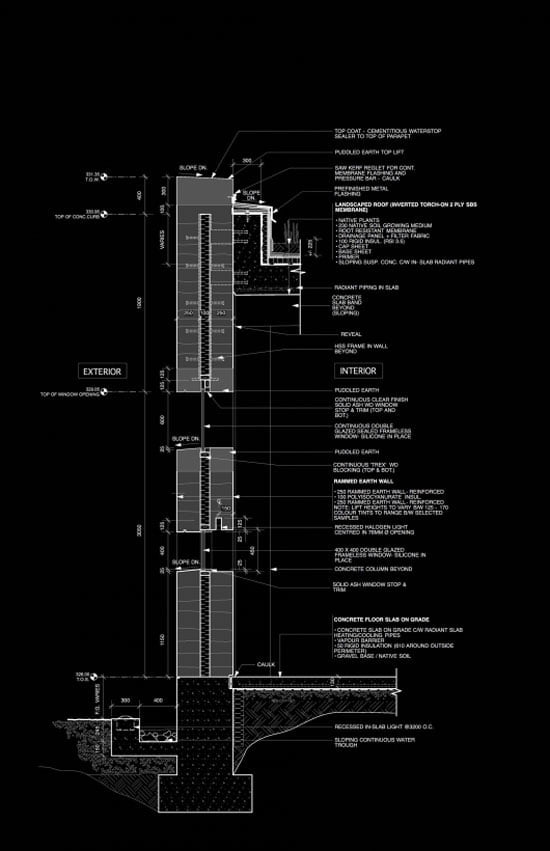
Ref : nkmipdesert.com, en.wikipedia.org, Nic Lehoux Photography.
Review of People for Nk Mip Desert Cultural Center:
>> This a well done show of local native culture and the rare antelope brush desert ecosystem. Good desert walking trails, with useful information and snakes. We saw a rattlesnake and gopher snake, the real thing right at our feet (cool!)
>> Loved seeing the eaglet high above the Center. Great, great metal sculptures surround the Center and the attached resort.
>> The Center has excellent audio-visual presentations about the local First Nations culture. The Inkameep Day School story and art are fascinating.
>> There is so much to do and see. The inside part is temperature regulating, so if the day gets too hot in the summer, it is incredibly relaxing. You can learn about and get thrill by the rattlesnake show, learn about PowWows, or learn about native plant life. Sometimes the PowWow show is interactive and real performance and sometimes it is more of an academic look at PowWows. It depends on the day. There is a remake of village with art and pit huts you can go inside on the hike. – Only about 20 minutes from the “museum” section.
> The displays in the building are very informative and the movie good. The path walk around the grounds was also neat with interesting displays. You can also get drive and guide around the walk as it is a fair ways.
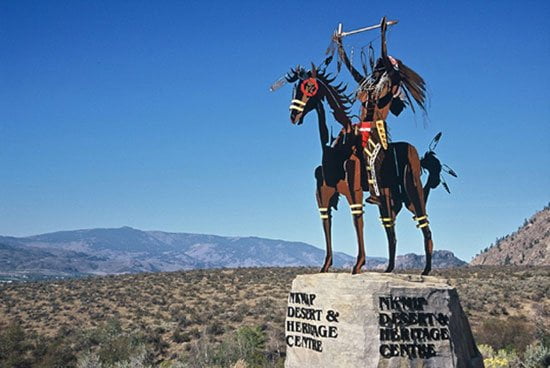
2 replies on “Design Review of Nk Mip Desert Cultural Center, Osoyoos, Canada”
It’s really amazing and everything is worked out properly. ..thanks for sharing and good luck.
Thanks Ajay 🙂
Really nice to hear from you, wish to be with me for future blogging journey.
Thanks Again.